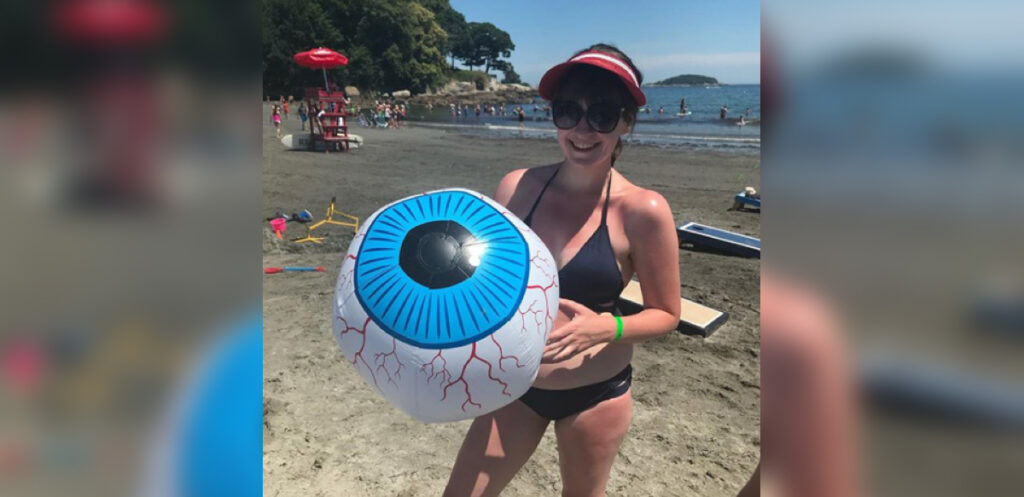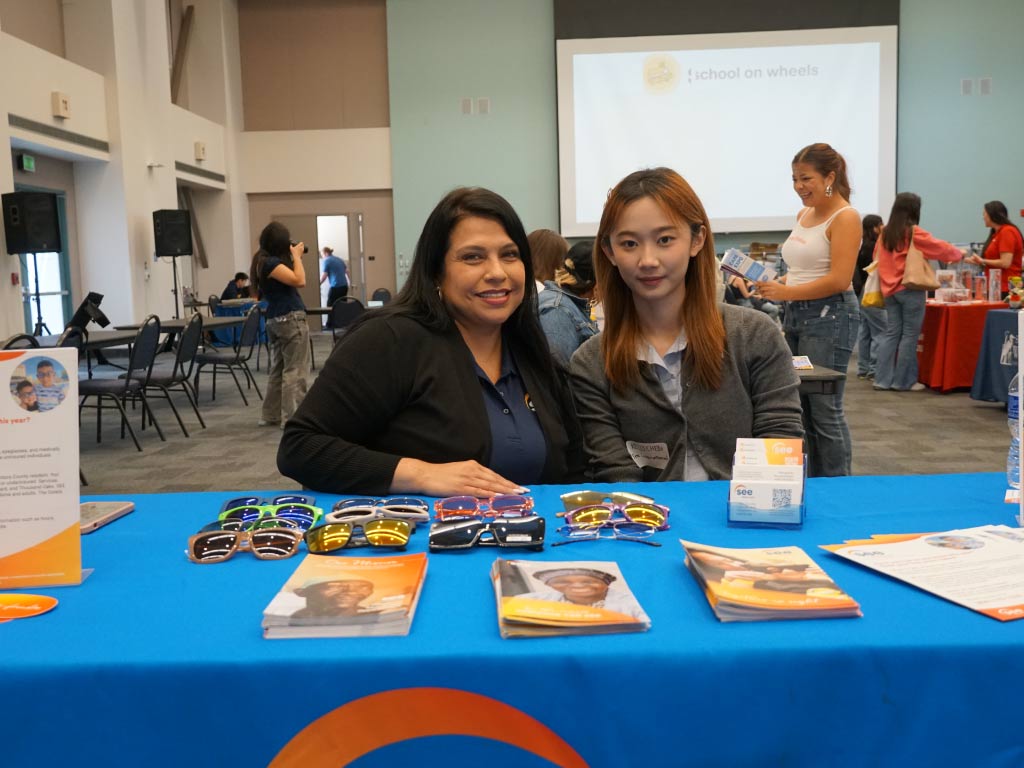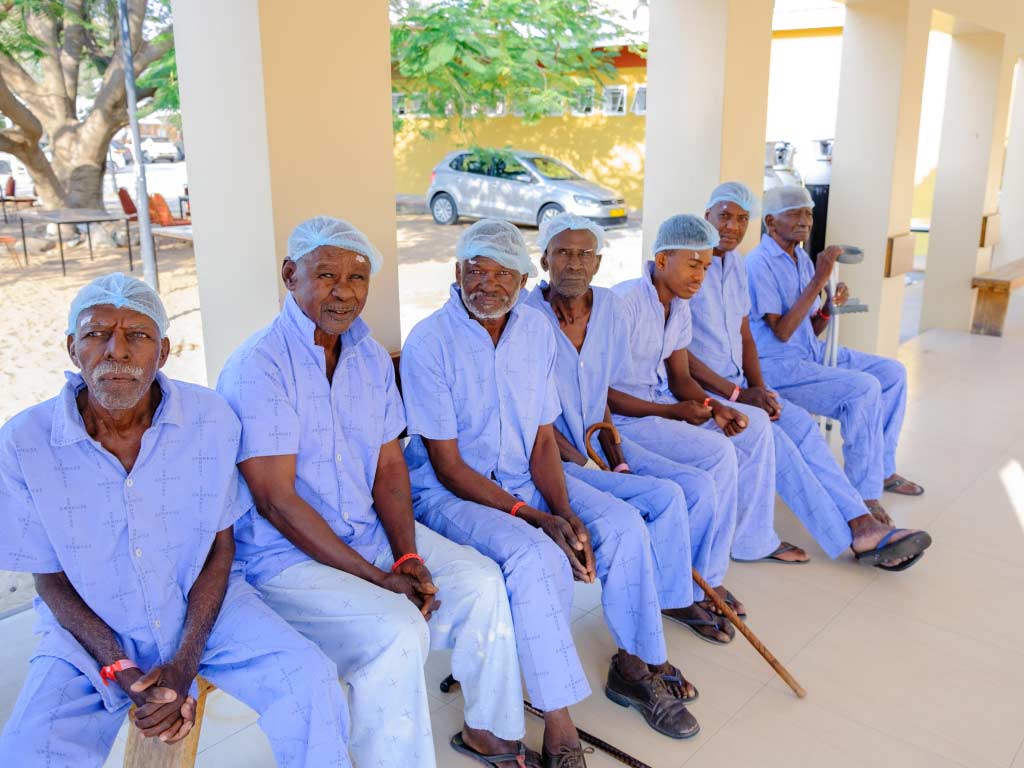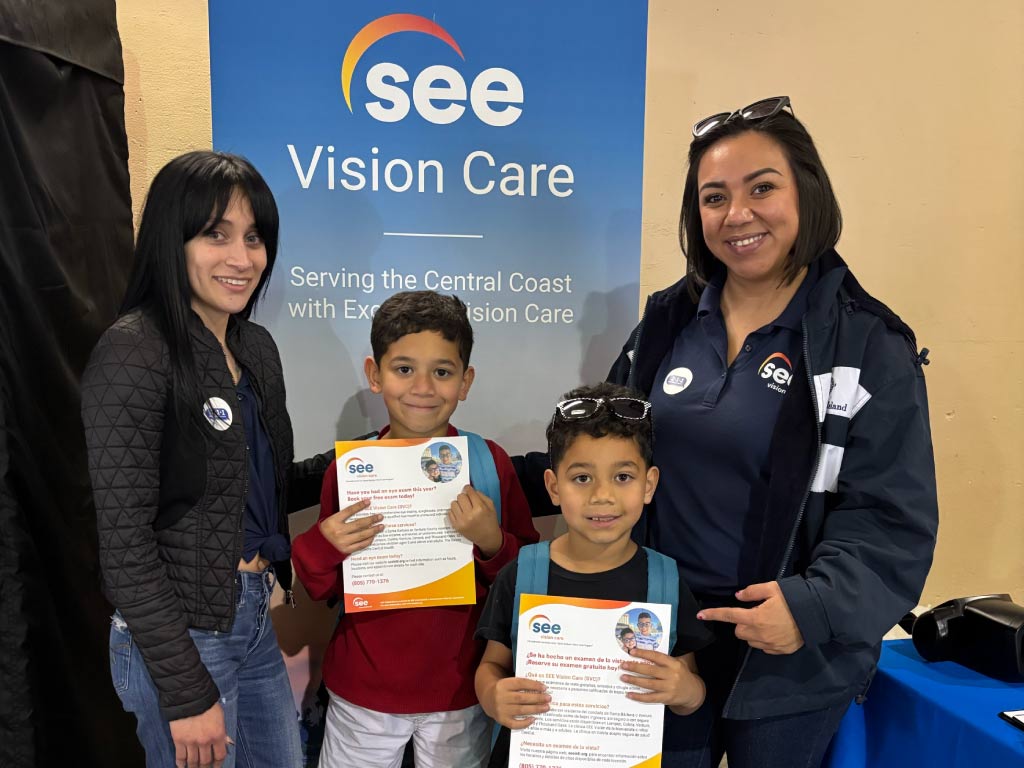“I remember the Fourth of July in 2017, I was lying in my room listening to the fireworks go off – such a visual thing that I couldn’t see for myself. It was a surreal moment for me a year later, being on the beach the next Fourth of July. I had hit a year since being infected, so we went to the beach with this big eyeball beach ball as a celebration. It’s amazing what a difference a year could make.” – Laura Chew
For those of us who have never had to live without our eyesight, the thought of going blind is something we might never even consider. Maybe we don’t think about it because we are young and healthy or because we have access to regular eye exams and habitual care. Or maybe we know that we can count on modern medicine and technology to keep our vision clear. For whatever the reason, we rarely consider how important our vision really is to us. Maybe because of those reasons, it’s become hard for us to imagine how challenging, exhausting, and isolating it can be to lose that part of ourselves. Maybe we don’t think about it because we don’t even want to consider the possibility. What would life really be like if we were unable to view the world around us?
I sat down with Laura Chew, a Boston native who, like many of us, never really thought about the importance of her vision. She was an active and vibrant young woman who could count on her health – and her contact lenses – to live a perfectly fulfilling life. That was, until July of 2017, when Laura took a trip to New York to visit a few college pals. The group of old friends were planning on brunch and nice weather, and an easy kayaking trip in the river of Manhattan. The day went off without a hitch, but the following morning Laura felt a burning sensation in her eyes. She thought it was an allergic reaction to her contact solution or something she had come across the day before, so the friends continued their weekend as planned. After capping off the weekend with dinner in the city, Laura made her way back to Boston on the train. During the ride, she realized how hard it had become for her to close her eyes; she likened the sensation to having a lighter held up to each of her eyes. By the time she made it back to her apartment, things had changed, but now she could barely get her eyes open, and she felt as though she was crawling in her own skin. Laura remembered, “I couldn’t open my eyes. I was feeling claustrophobic. I was still assuming I was having an allergic reaction – I had not a clue this would have any impact on my life or my eyesight forever.”
Laura made an urgent trip to her ophthalmologist, who discovered that Laura had a rare and debilitating infection known as Acanthamoeba keratitis. By then, Laura’s eyes felt as though they were covered with crushed glass and open wounds, as she could best describe it. Acanthamoeba keratitis is a rare and serious infection of the eye that can ultimately result in permanent visual impairment or blindness and is believed to be caused by the amoeba Acanthamoeba. This free-living organism can exist in any form of water including fresh and salt water, chlorinated water including swimming pools and fountains, and even treated tap water. The amoeba infects the cornea, damaging that outer transparent layer of the eye. Acanthamoeba keratitis most commonly occurs in contact lens wearers, as the water tension between the eye and the contact creates the perfect conditions for the infection. According to the Centers for Disease Control and Prevention (CDC), although anyone can develop the infection, since its first diagnosis in 1973, an estimated 85% of U.S. Acanthamoeba keratitis cases affect contact lens users.
Laura’s ophthalmologist sent her to Massachusetts Eye and Ear, a specialty hospital in Boston. By the time Laura was walking into her appointment at Mass Eye and Ear, her eyes had finally started to feel a reprieve from the constant pain. However, she soon learned that the feeling wouldn’t last long:
“My doctors told me that it would start to get better before it got worse. Suddenly, we were discussing treatments where they would need to remove the top layer of my eyes with a razor blade and harsh chemical eye drops – one of which is literally a pool cleaner. We would have to do the drops every hour, on the hour. Down the line, I could need corneal transplants, become permanently blind, or lose my eyes entirely.”
Laura spent the next three months out of work and in intensive treatment, but the parasites wouldn’t officially be dead until November of that same year. In all that time, her eyes had become incredibly sensitive to light. For months, Laura lived in darkness, with black-out sunglasses and black sheets duct-taped to the windows of her apartment. Because of the rarity of her infection, she spent most of her time at Mass Eye and Ear where, surrounding her treatments, doctors and research fellows attempted to learn more about the parasites.
By November, Laura had fought off the infection and was left with a small blind spot in her right eye and early glaucoma in both eyes as a result of the parasitic debris. Laura joked, “My dad teases me that I am the luckiest unlucky person that he knows. To have had this at all, let alone in both of my eyes, then having as much of my vision left as I do – it’s all so rare.” Laura and her doctors assume that she must have become infected from the mist while she and her friends were paddling that day on the Hudson River. No one else in her group had any signs of infection though, not even the friend that shared Laura’s kayak. She couldn’t remember a time where she had gotten splashed and they hadn’t gotten into the water. Laura laughed, “We weren’t exactly Bear Grylls-ing it!” It seemed as though everything had happened by chance; the luck, or unluck, of the draw:
“Fortunately, I had access to one of the best hospitals. If I had lived anywhere else in the world or couldn’t afford the care I needed, I would have been blind at 27. I had never thought of what I would do if I had lost my sight. I came out of the experience wanting to get involved in an organization like SEE, because of how mentally draining, isolating, and claustrophobic blindness had been.”
For the indefinite future, Laura will need to have her vision checked every three months and, eventually, every six. Now being on the other end of things, she’s grateful for her access to high-quality eye care at Mass Eye and Ear and for the support of her family and friends in her time of need. She said, “I had support. My friends would sit in the dark with me to keep me company and didn’t even think to ask if my condition was contagious! I couldn’t go out and do the things I was used to doing, but my friends and family helped me through it.”
Laura’s story reminds me to take stock of the value in my own vision each day and inspires me to look at our organization with more passion and awe. SEE International aims to break the cycle of hardship that blindness and visual impairment cause, making patients, families, and communities, healthier and stronger. Our medical volunteers and partners come together to care for people who need it most, working side-by-side with local doctors and clinics to improve access to high-quality eye care and surgery. And we’re honored to have Laura join us in the fight against avoidable blindness.
While SEE International does not treat Acanthamoeba keratitis, we feel it is important to share these real-life examples of what it means to a person to have access to the care they need to maintain or regain their sight. Avoidable blindness can come at a person in many ways, and while some are rarer than others, they are all debilitating and isolating. We hope Laura’s story inspires you to reflect for a moment on the importance of your vision, what you would do if you had to live without it, and how fortunate so many of us are to have access to high-quality care when and where we need it. With all that in mind, we work every day to create access for those in the world who suffer from little more than circumstance. When we work together, we can create a better future for countless patients and family members who deserve the right to see and live full lives.
________________________
“Acanthamoeba Keratitis FAQs | Acanthamoeba | Parasites | CDC.” Centers for Disease
Control and Prevention, Centers for Disease Control and Prevention, www.cdc.gov/parasites/acanthamoeba/gen_info/acanthamoeba_keratitis.html.
Lorenzo-Morales, Jacob, et al. “An Update on Acanthamoeba Keratitis: Diagnosis, Pathogenesis and Treatment.” Parasite (Paris, France), EDP Sciences, 2015, www.ncbi.nlm.nih.gov/pmc/articles/PMC4330640/.
“Acanthamoeba Keratitis & Contact Lenses.” Acanthamoeba Keratitis & Contact Lenses | Prevent Blindness, www.preventblindness.org/acanthamoeba-keratitis-and-contact-lenses.
“Acanthamoeba Keratitis: What Contact Lens Wearers Need to Know.” All About Vision, www.allaboutvision.com/contacts/acanthamoeba-keratitis.htm.






